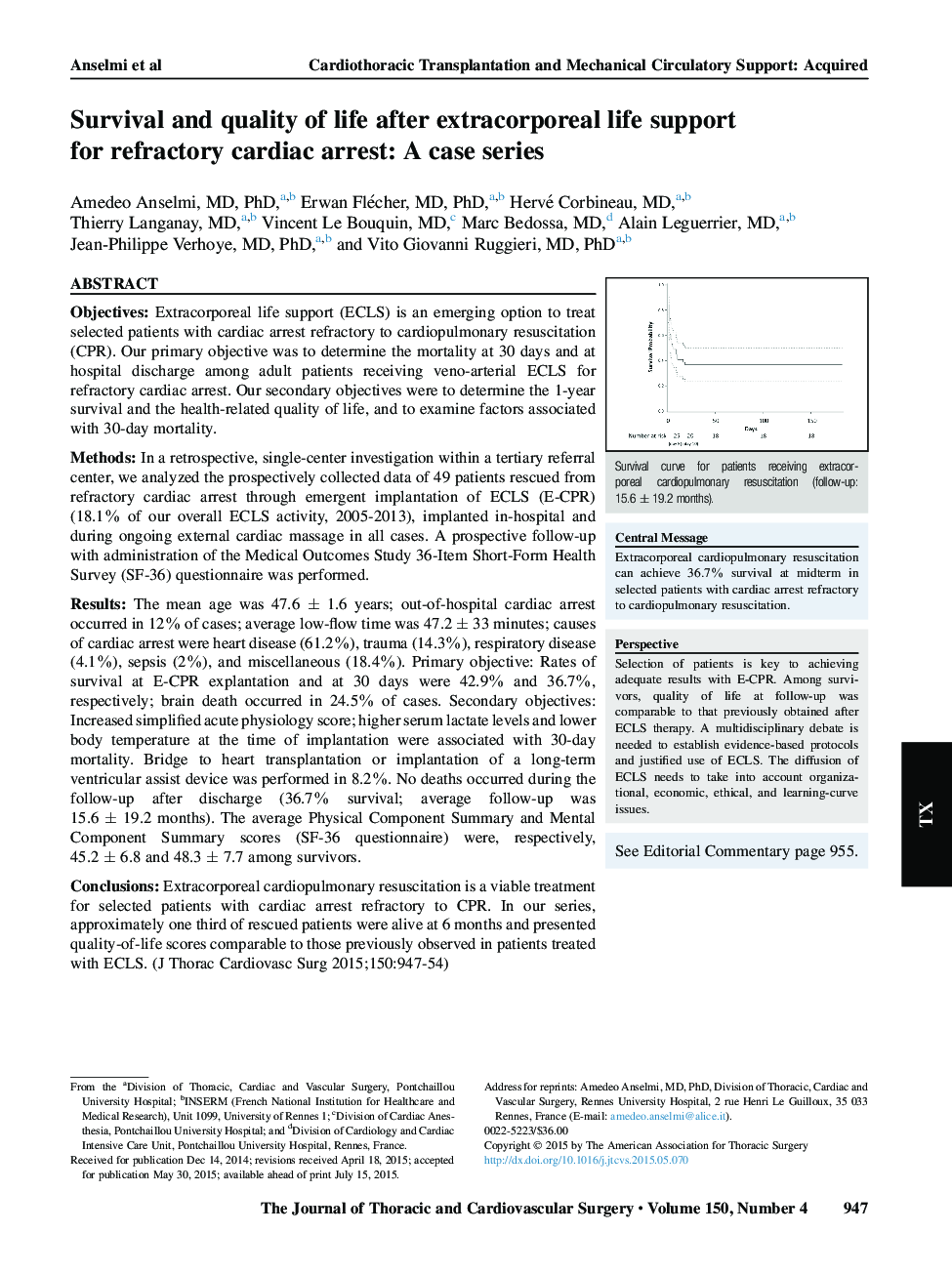| کد مقاله | کد نشریه | سال انتشار | مقاله انگلیسی | نسخه تمام متن |
|---|---|---|---|---|
| 2979075 | 1578593 | 2015 | 8 صفحه PDF | دانلود رایگان |
ObjectivesExtracorporeal life support (ECLS) is an emerging option to treat selected patients with cardiac arrest refractory to cardiopulmonary resuscitation (CPR). Our primary objective was to determine the mortality at 30 days and at hospital discharge among adult patients receiving veno-arterial ECLS for refractory cardiac arrest. Our secondary objectives were to determine the 1-year survival and the health-related quality of life, and to examine factors associated with 30-day mortality.MethodsIn a retrospective, single-center investigation within a tertiary referral center, we analyzed the prospectively collected data of 49 patients rescued from refractory cardiac arrest through emergent implantation of ECLS (E-CPR) (18.1% of our overall ECLS activity, 2005-2013), implanted in-hospital and during ongoing external cardiac massage in all cases. A prospective follow-up with administration of the Medical Outcomes Study 36-Item Short-Form Health Survey (SF-36) questionnaire was performed.ResultsThe mean age was 47.6 ± 1.6 years; out-of-hospital cardiac arrest occurred in 12% of cases; average low-flow time was 47.2 ± 33 minutes; causes of cardiac arrest were heart disease (61.2%), trauma (14.3%), respiratory disease (4.1%), sepsis (2%), and miscellaneous (18.4%). Primary objective: Rates of survival at E-CPR explantation and at 30 days were 42.9% and 36.7%, respectively; brain death occurred in 24.5% of cases. Secondary objectives: Increased simplified acute physiology score; higher serum lactate levels and lower body temperature at the time of implantation were associated with 30-day mortality. Bridge to heart transplantation or implantation of a long-term ventricular assist device was performed in 8.2%. No deaths occurred during the follow-up after discharge (36.7% survival; average follow-up was 15.6 ± 19.2 months). The average Physical Component Summary and Mental Component Summary scores (SF-36 questionnaire) were, respectively, 45.2 ± 6.8 and 48.3 ± 7.7 among survivors.ConclusionsExtracorporeal cardiopulmonary resuscitation is a viable treatment for selected patients with cardiac arrest refractory to CPR. In our series, approximately one third of rescued patients were alive at 6 months and presented quality-of-life scores comparable to those previously observed in patients treated with ECLS.
Journal: The Journal of Thoracic and Cardiovascular Surgery - Volume 150, Issue 4, October 2015, Pages 947–954
